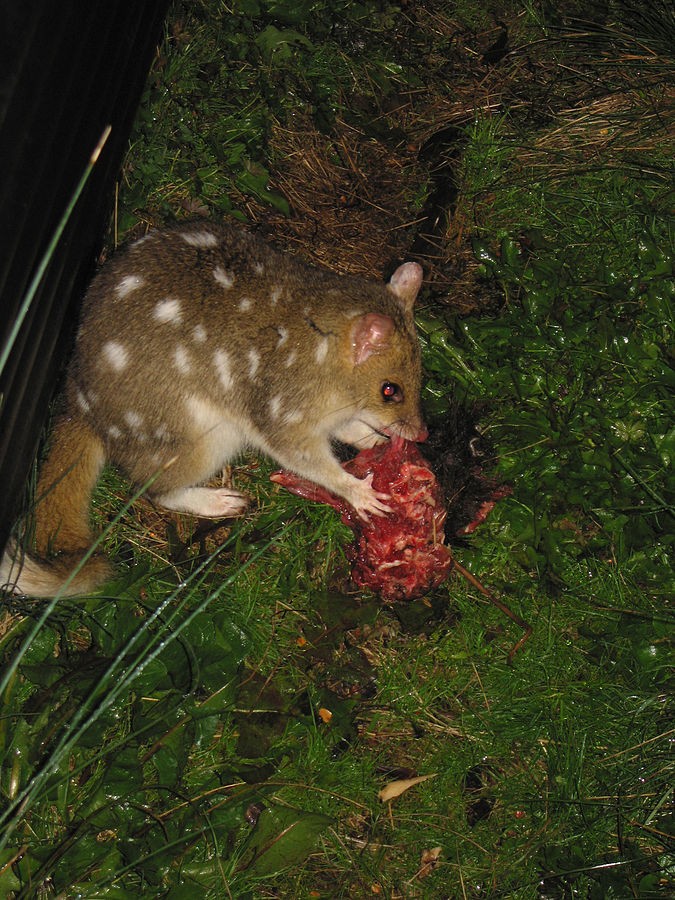Eastern quoll
A species of Quolls, Also known as Quoll Scientific name : Dasyurus viverrinus Genus : Quolls
Eastern quoll, A species of Quolls
Also known as:
Quoll
Scientific name: Dasyurus viverrinus
Genus: Quolls
Content
Description General Info
Description
Eastern quolls are generally about the size of a small domestic cat, with adult males measuring 53 to 66 cm (21 to 26 in) in total length, including the 20 to 28 cm (7.9 to 11.0 in) tail, and having an average weight of 1.1 kg (2.4 lb). Females are significantly smaller, measuring 48 to 58 cm (19 to 23 in), including a 17 to 24 cm (6.7 to 9.4 in) tail, and weighing around 0.7 kg (1.5 lb). They have a tapering snout, short legs, and erect ears. They can be distinguished from all other species of quoll by the presence of only four toes, rather than five, on the hind feet, lacking the hallux. They have a thick coat covered by white spots, that can be either light fawn or near black, with off-white underparts stretching from the chin to the underside of the tail. Both fawn and black individuals can be born in the same litter, although in surviving populations the former represent about three times more common than the latter. The spots are 5 to 20 mm (0.20 to 0.79 in) in diameter, and are found across the upper body and flanks, from the top of the head to the rump, but, unlike some other species of quoll, do not extend onto the tail. Females possess a relatively shallow fur-lined pouch formed by lateral folds of skin. The pouch becomes enlarged during the breeding season, and includes six to eight teats, which only become elongated and functional if one of the young attaches to them, regressing again after they leave the pouch. As with all quolls, the penis of the male bears an unusual fleshy appendage. The large intestine of eastern quolls is relatively simple, having no caecum, and not being divided into a colon and rectum. An unusual feature of eastern quolls is the presence of an opening connecting the ventricles of the heart in newborn young, in addition to that connecting the atria found in all marsupials. Both openings close after a few days. 
General Info
Lifespan
5-7 years
Diet
Eastern quoll primarily subsists on small mammals and insects. The creature displays a tendency toward carnivory, utilizing stealth to ambush prey such as possums, bandicoots, and even birds. Occasionally, it indulges in carrion or agricultural pests, supplementing its predominantly meat-based diet.
Appearance
Eastern quoll is a small carnivorous marsupial with a body length of 25-40 cm and a tail of similar length. It has a pointed snout and rounded ears, giving it a cat-like appearance. Its soft, coarse fur is mainly black with white spots on the rump and tail, while its belly has a creamy white color. With its partially webbed toes on its hind feet, eastern quoll differs from its relatives.
Behavior
Eastern quoll is a mostly nocturnal carnivore, notable for its solitary nature, except during mating season. It has a wide-ranging diet, often preying on vertebrates and invertebrates. Uniquely, eastern quoll emits secretive, strong odors while marking its territory. Surviving in diverse habitats, it displays adept climbing and swimming abilities.
Population
Decreasing
